You will land on your self-booked flight at Ivato airport in Antananarivo, the capital of Madagascar. Welcome, or ‘tonga soa’!
In the terminal you will be issued a visa, the costs are around $50 (depending on the currency exchange rates). Your driver will wait for you at the exit near the custom hall to help you in the unlikely event of you needing assistance with formalities. We recommend exchanging money there as well, as it may take longer elsewhere and costs are more expensive. The driver will then take you to your hotel in the city center, where you can enjoy the rest of the day and relax after the long flight.
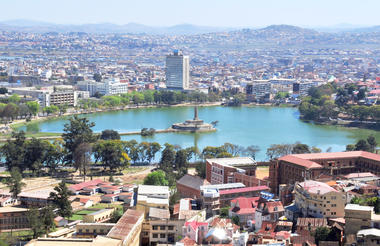
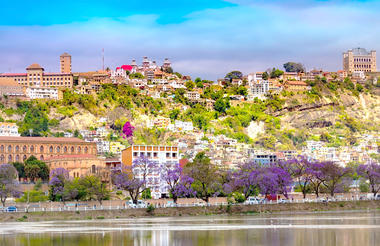
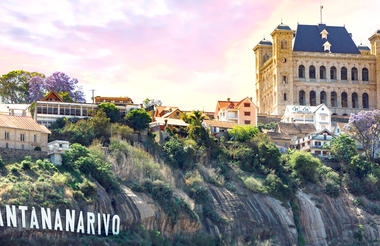
Early in the morning, right after breakfast, you begin your trip to the South part of the country, driving along the National Road 7 to reach Anysirabe. After 2 hours of drive, you’ll first pass by Ambatolampy.
This is considered to be the coldest town of Madagascar because of its altitude of 1500 meters in the Ankaratra mountain range. Here, there is a possibility to visit a small family owned factory producing aluminium cooking pots and other kitchen utensils, sold all over the island.
You will follow the National Road 7 again and will reach Antsirabe after two hours.
In the afternoon, we suggest visiting the little town and discover the Malagasy central highlands' life and this colonial “vestige” of the country by foot. It is a volcanic area with a lot of rice culture characterizing this “Asian part” of the island. The vegetable and even wheat plantations are the main sources of income for its inhabitants - and the vegetables supply for the capital of Antananarivo is ensured by this region. You can visit the city center, the market or make a little tour with rickshaws.
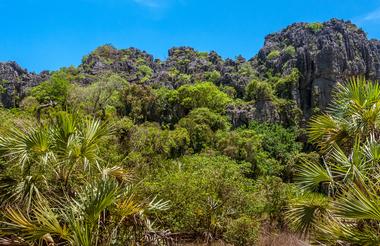


Today, you will be driven further South on the RN7 for the last stretch of this long drive, first reaching Ambositra.
Ambositra
Ambositra is a city well-known for Malagasy craftsmen. You can visit the sculptors during their working hours. They are the "Zafimaniry" – an ethnic group of Asiatic origin, particularly known for their beautiful wood sculptures and marquetry. You can also have lunch here.
You will continue in the same direction for about four hours until you reach Ambohimahasoa, and after about an hour you will exit the RN7 and head in the Eastern direction for another 45 minutes until you reach you final destination of the day - Ranomafana, with its rainforest rich in endemic fauna and flora. During the colonial period, Ranomafana (In Malagasy means "hot water") was known as a small village where the French inhabitants of Fianarantsoa and the surrounding area occasionally took a bath in the thermal springs.
We will organize your overnight here in a special place.
Soa Lodge
The Soa Lodge is your perfect choice for an intimate family-style stay in Ranomafana - with just three bungalows and one suite - this is the smallest Lodge in Madagascar! You are guaranteed tranquility here, in a location just on the edge of the village, around 5 km away from the National Park entrance. The bungalows are very simple but clean, equipped with hot water and limited electricity (for light).
The restaurant of the lodge offers a 3-course dinner based on local and seasonal ingredients, prepared in accordance with the Malagasy traditions and served by friendly and careful staff. The Soa Lodge will be perfect for those seeking a more authentic local experience in Ranomafana.



Ranomafana NP
Today is reserved for a visit of the Ranomafana National Park where you have an option to participate in walks from 2-6 hours. In the past, Ranomafana was best known for its hot springs, but in the last two decades the accent has shifted to the national park, covering an area of about 40.000 hectares of mid-altitude rainforest with an incredible and unrivaled diversity of endemic flora and fauna, including 12 lemur, 115 bird, 58 reptile, 98 amphibian, 90 butterfly and more than 200 spider species can be found living in this lush national park. For that very reason, Ranomafana was included in the list of Unesco World Heritage Sites in 2007.
Ranomafana is one of the most important parks of Madagascar for scientists. That’s also the reason you can find an international science center from the world-renowned primatologist Patricia Wright here - a unique research and conservation center that works in close collaboration with Madagascar National Park for over 26 years. CVB facilitates research and manages numerous projects including development, reforestation, and biodiversity monitoring. Their main aim is to improve the health and well-being of Malagasy people while safeguarding the surrounding ecosystem and its biodiversity.



Ranomafana - Fianarantsoa
After an early breakfast, you will be driven to – Fianarantsoa, the capital of Betsileo, home of 1001 churches (1.45 hours’ drive).
Fianarantsoa
This is a remarkable old town that appears on the list of world heritage sites. The city is surrounded by vineyards and the only tea plantation of Madagascar. The shape of the landscape necessitates the growth of rice in terraces on different levels - like the capital, Fianarantsoa is built on several hills. The town is famous for the Karenjy enterprise - where the Malagasy car Mazana II is produced, alongside the project for the collection and treatment of waste and second-hand clothes. This social enterprise can really stimulate parts of the Malagasy economy.
Fianarantsoa - Ambalavao
After about one hour’s drive, a few minutes after passing Ambalavao, we will stop for a visit to the private lemur park called Anja Park.
Anja Park
This reserve is managed by the local community and has many cultural and historical remnants. Apart from being a well-known spot for spotting the Catta lemurs - the fauna is adequately represented by a large colony of lemurs (about 300, whereas they were almost extinct 20 years ago!), as well as many birds and chameleons. The view of the rice paddies from a rocky promontory is amazing - a breath of fresh air!
Ambalavao - Ranohira
After this visit, you will get back to the car and resume the journey to Ranohira – a village located nearby the Isalo National Park. The landscape will get drier all the time until you pass an almost steppe-like area, before arriving at the beautiful mountains of the Isalo Massif.
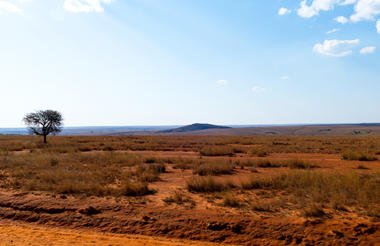


Isalo National Park
This day is dedicated to visiting the Isalo National Park, a park covering 80,000 hectares and consisting of sandstone rocks cut by deep canyons and eroded into weird shapes. In these canyons, the local wildlife inhabits the gallery forests that form corridors along small streams. The ring-tailed lemur, Verreaux, Sifaka and the brown lemur are commonly sighted along with birds and chameleons in the Canyon des Makis and Canyon des Rats. You can also take the short Namaza trail that takes you along a scenic route to a magnificent natural swimming pool where you can just relax and swim. You will have a picnic lunch.

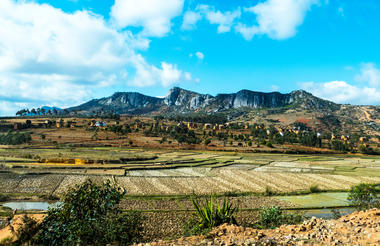

Ranohira - Tuléar - Ifaty
We start early today and leave Ranohira towards the coastal town of Tulear (four hours' drive), which is at the end of National Road RN7. You will drive through a landscape characterized by vast savannas stretching to the horizon, limited by impressive mountain ranges, first crossing the centre of the sapphire region. According to experts of precious stones, this place is among the few places on Earth that is rich in precious stones. The first baobab trees along the road present a good indication that we are entering a much drier area. On the way, you will also notice a number of Mahafaly tombs. The Mahafaly are a people of strong ancestor worship - they decorate the tombs with paintings depicting episodes in the lives of the deceased.
After passing Tulear, we will continue moving in the northern direction for about 30 minutes to the coastal village of Ifaty/Mangily.
Spiny forest
The well-known Spiny forest is definitely worth a visit to observe the magnificent Baobab trees. The turtle village is located close to the Spiny forest, which is another attraction to visit. In the village, you may spot mouse makis and more Baobab trees, in addition to turtles.



Activities in and around Ifaty
In and around Ifaty, you will be able to spend time at your discretion. The hotel is situated close to the village and you can easily reach the well-known Spiny forest. It is definitely worth a visit to observe the magnificent Baobab trees. The turtle village is located close to the Spiny forest, which is another attraction to visit. In the village, you may spot mouse makis and more Baobab trees, in addition to turtles. Another option is to go on a snorkeling excursion. The hotel can assist you in selecting the perfect boat and material to guarantee your snorkeling excursion to be a success. Diving is another possibility, and the hotel staff can assist you with choosing the right place. Last but not least, visiting the hotels’ own agricultural school projects with its many different disciplines is also a truly enriching experience.






Ifaty - Tulear - Antananarivo
Today, depending on the time of your inland flight, you will be transferred back to the airport of Tulear for the return flight to Antananarivo. On arrival, you will be transferred to a hotel in the vicinity of the airport for day-use. At the appropriate time, you will be taken to Ivato international airport and will leave Madagascar with hopefully fond and unforgettable memories.




